Back in 2011, I started an air layer on a large cryptomeria. Two years later, I removed the layer and the tree was off to a new start as a bonsai (see “Large cryptomeria air layer part 1” and “Part 2” for details).
Since that last post in 2013, I have yet to share an update. Here are a few photos to get you up to speed.
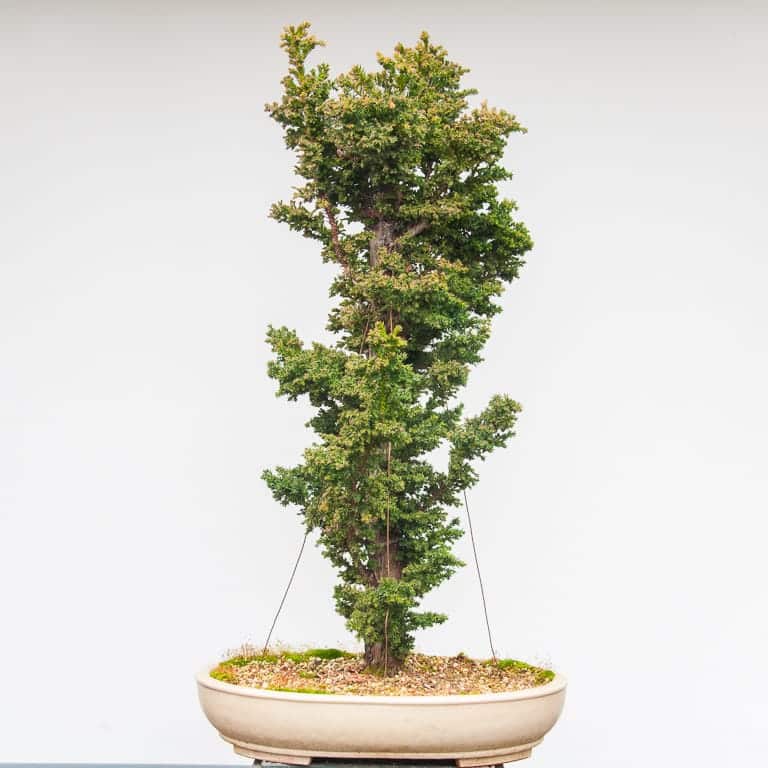
2014 – Two years after separating the air layer
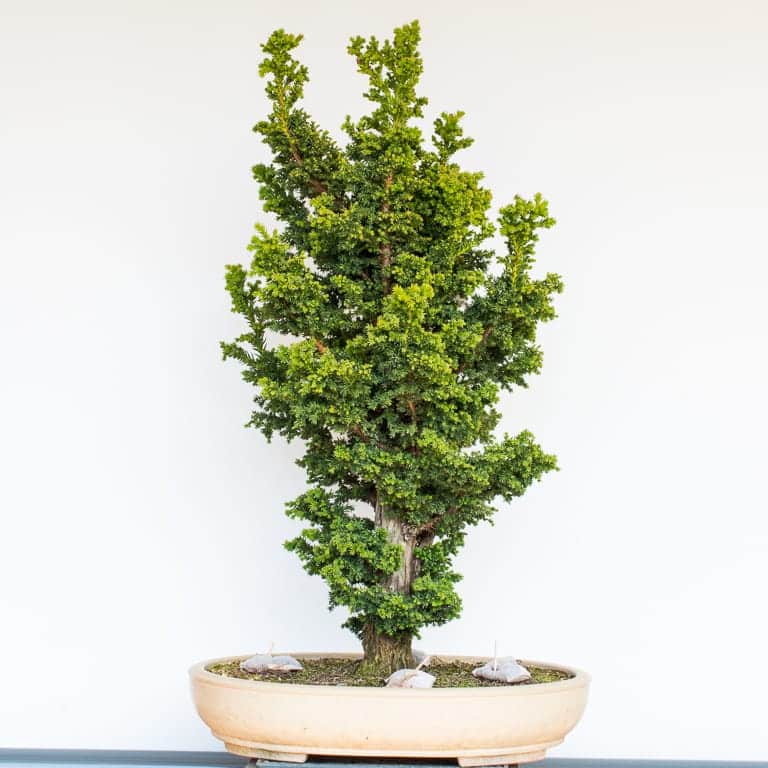
2015 – The new roots are now strong enough to support the tree
Although the tree was strong enough to work on in 2015, I waited another year before pruning.
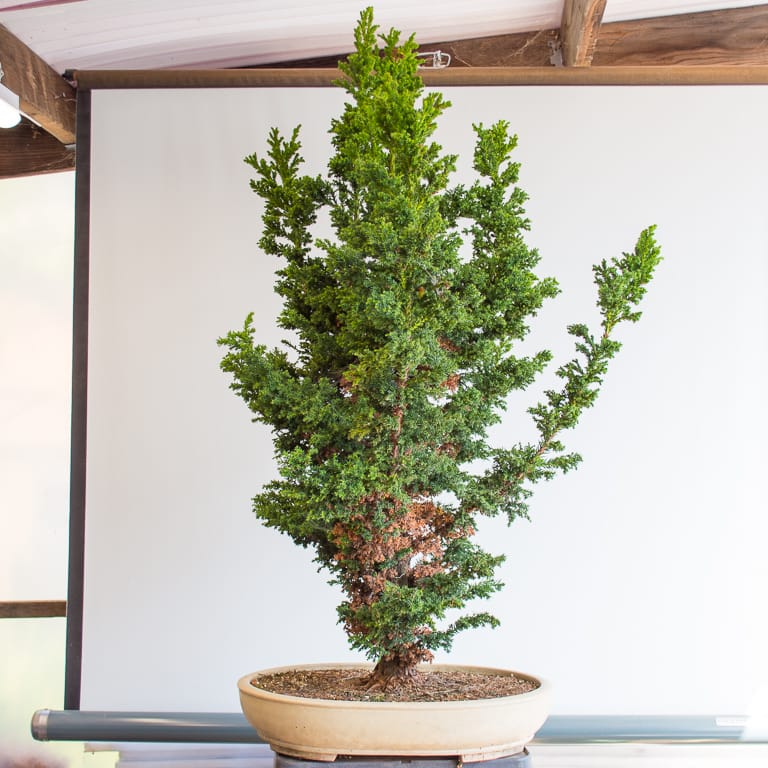
2016 – Before cutback
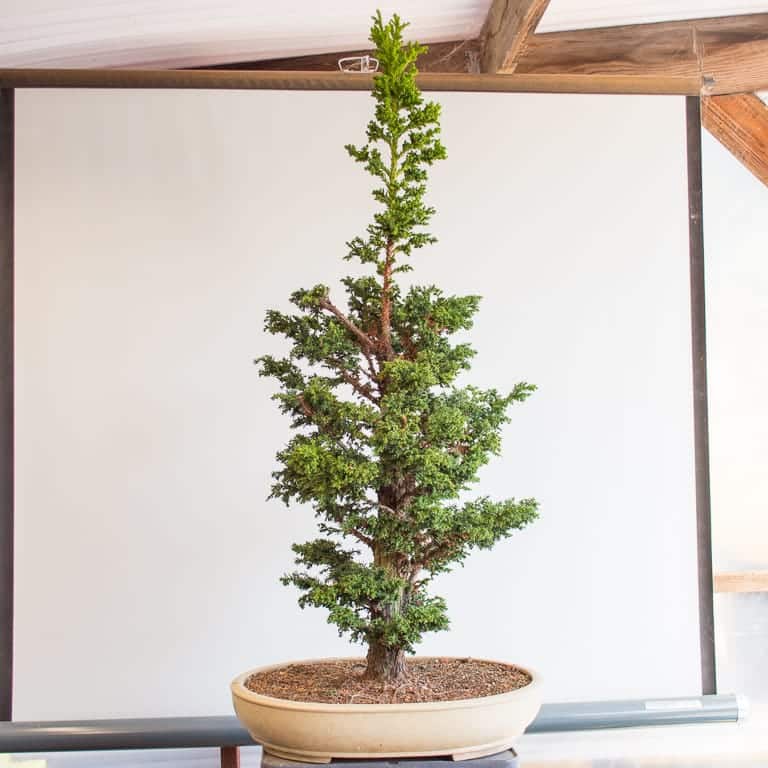
2016 – After cutback
I repotted the tree and removed the lower branches the following year.
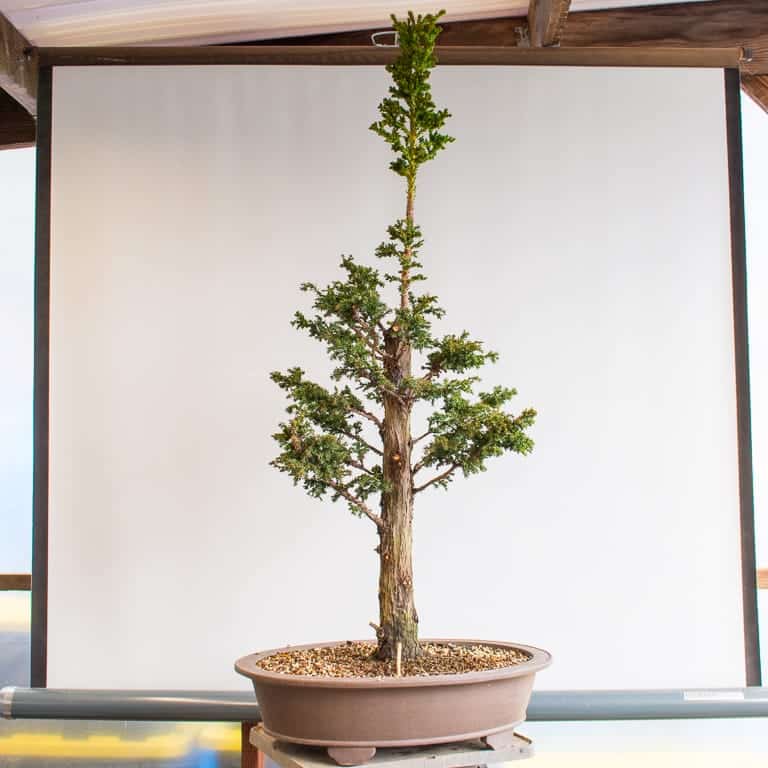
2017 – after removing the lower branches
As you can see, I’d been developing a new apex by letting the top shoot on the tree grow freely for several years.
Many cryptomeria bonsai with large trunks lack taper on the upper part of the trunk as this last step can take a long time. In this case, the new apex grew for seven years before I started an air layer to remove it.
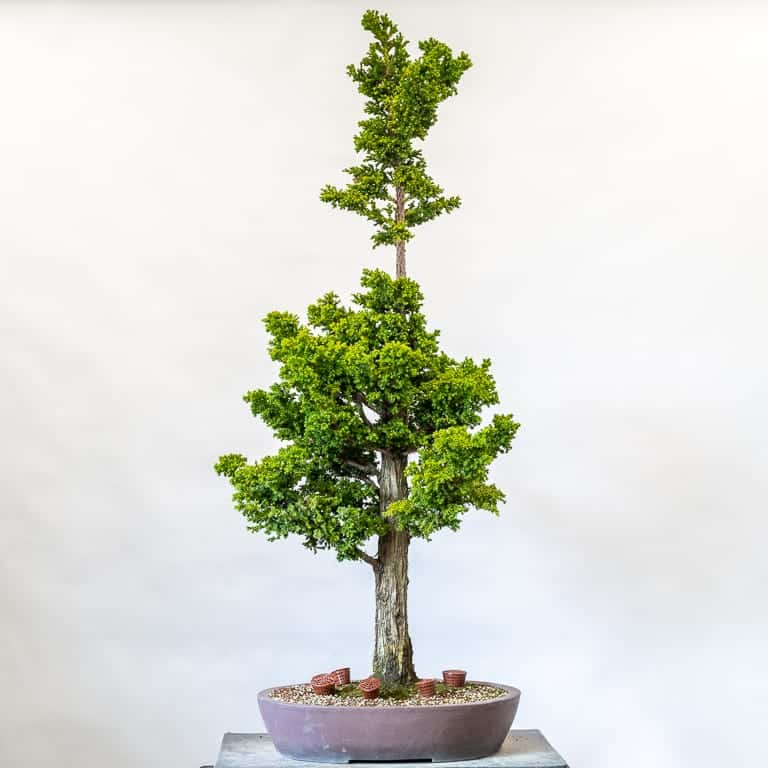
2019 – The upper section of trunk is ready to be air layered
I successfully removed the air layer earlier this year and the tree is now ready to be styled.
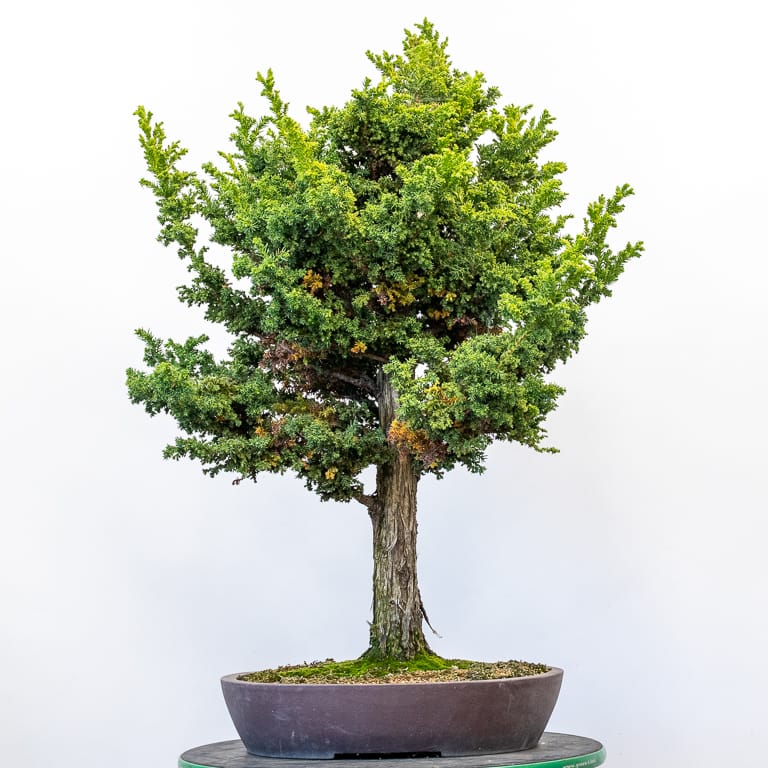
Cryptomeria – September, 2020
Of course, the tree has been ready for styling for the past five years. Because I neglected basic cutback during most of these years, the branches are uneven and it will take many years to develop a basic silhouette.
When I started pruning, I couldn’t get a good sense of where the future outline would be so I made some initial cuts.
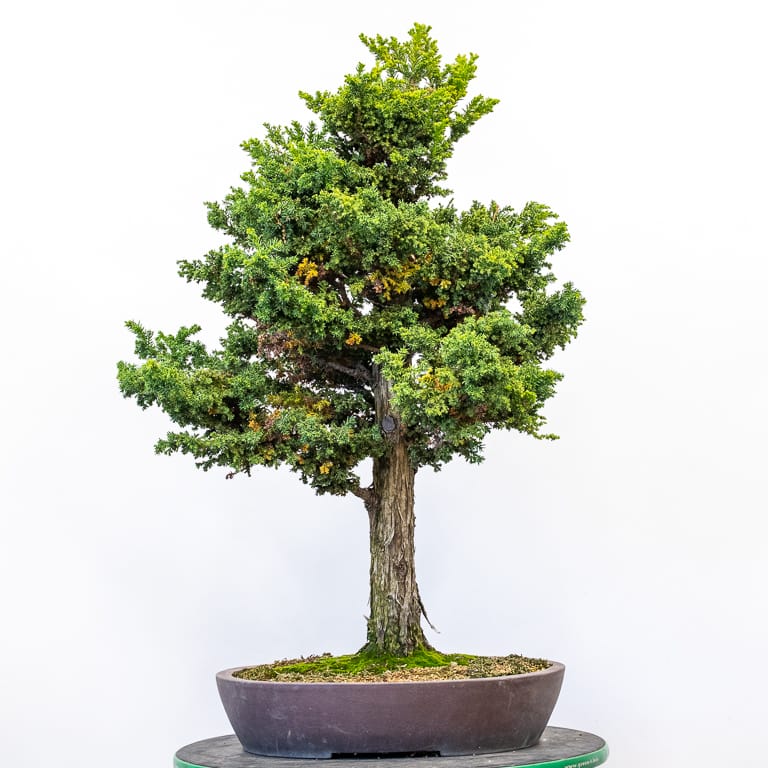
After minor cutback
From here I proceeded with the rest of the cutback.
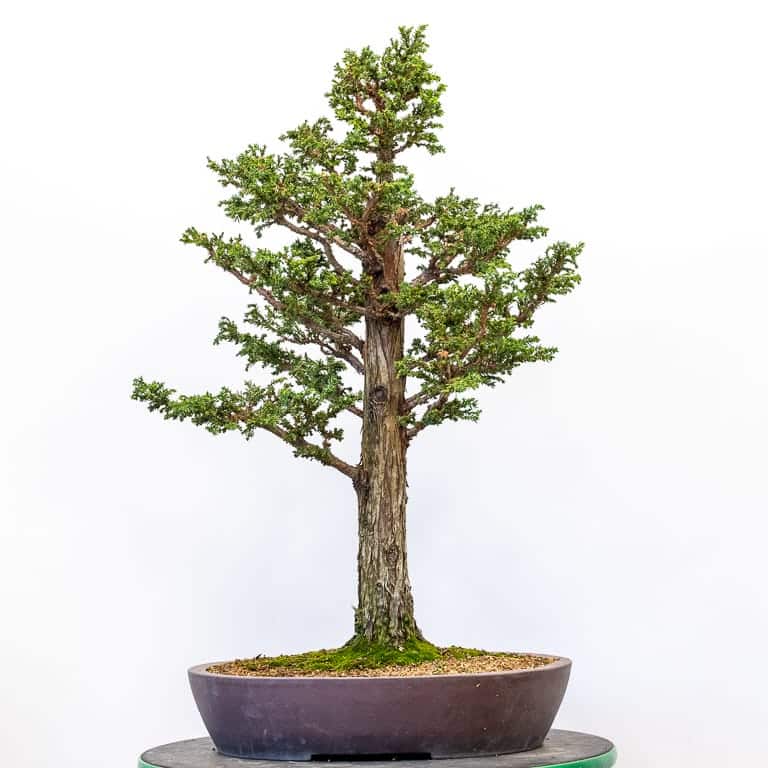
Cutback complete
I ended up removing more foliage than I’d planned on so I expect the tree will recover a little slower than it would have if I’d done less cutback.
Not that it was time to wire the primary branches, I began to pay the price of neglecting to bend the branches years before when they were slender and flexible. Most of the branches will need further reductions over time to create branch taper, but the main goal for this styling is to simply arrange the branches radially around the trunk so they all receive adequate light.
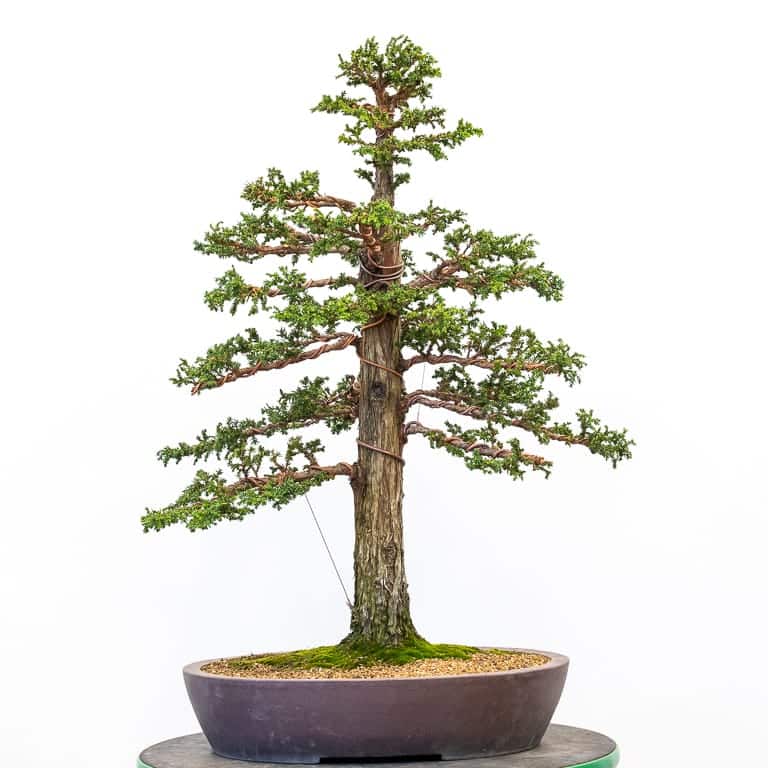
After wiring – 30″ tall
Interior shoots are prone to sunburn on cryptomeria, so I moved the tree under shade cloth where it will stay until the weather begins to cool.
I’m also misting the tree whenever I pass by with the hose as cryptomeria appreciate humidity and frequent overhead watering can help keep the foliage healthy.
Considering the scope of the work done on the tree, I plan to let it grow freely for another year before jumping into the branch refinement. Will provide more updates when that time comes!
Last chance to submit questions about water and fertilizer for the Bonsai Wire podcast
We’ll be accepting your questions related to watering, fertilizing, and water quality through September 30. If you’d like to hear from Michael, John, Andrew, or me, send your questions to talk at bonsaiwirepodcast dot com.
Find recent episodes at bonsaiwirepodcast.com.
Subscribe to Bonsai Tonight
New Posts Delivered Every Tuesday and Friday
Bill ‘Brien says
My young maples have grown quite full and is it
time to reduce the branching in balanced style( leftt and right?
Jonas Dupuich says
I’d prune when the leaves start to turn yellow – here are some tips about the timing: https://bonsaitonight.com/2019/10/15/timing-for-fall-pruning/
Steven Warburton says
Hey Jonas! I’ve been digging into bonsai all of this year and have enjoyed your blog. This post specifically is incredibly helpful to see. Often you witness bonsai practitioners working on excellent collected material or less frequently setting up younger seedlings for future excellence. Rarely do you get a chance to see a long term project over the course of many many years (and steps/decisions). I also appreciate that you provided some insight into what you may have done differently or better during the process to make the tree easier to work on/more complete at this particular stage. The taper you created at the apex is amazing! Very cool to see a formal upright in this style that did not need to have the top jinned.
Loving the podcast too! Keep up the great work.
Cheers,
Steve
Jonas Dupuich says
Thanks, Steve – I appreciate it! I’ll try to do more articles like this in the future. In the meantime, feel free to let me know if you have any suggestions. Thanks!
Steven Warburton says
I think beyond more tree progressions… hearing more info about how to develop yourself as you progress in the hobby would be interesting. You had some good discussions about the collection of someone new or intermediate to bonsai on the podcast. But you know how it is starting out…you get infatuated with a trees trunk but forget to analyze the nebari. Or you love the branching but overlook the ugly graft that would be difficult or impossible to overcome. So some more on material selection would be good. I know just this year I’ve seen my eye develop somewhat over repeated trips to the nursery. But any tips or help in that regard would be great.
Expanding on micro climates within your yard (like what Michael Hagedorn has posted about) would be good to hear more of. And also pathways to develop your skill and knowledge when travelling to Japan is not an option. This year has been challenging in the sense that there are few in person opportunities but what can you do to set yourself up for a successful 2021 as someone new to bonsai? Lastly, overwintering would be a good general topic to dig into though region and species play a big role obviously.
Cheers!
Steve
Jonas Dupuich says
Thanks for the suggestions Steve, these are all great topics! The self development one is interesting as not as much has been written about this.
Here’s a great article that’s related to the topic from Eric Schrader: https://phutu.com/what-your-bonsai-collection-would-look-like-if-it-were-up-to-me/